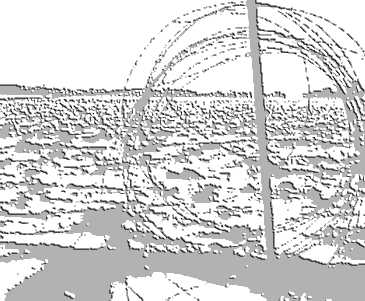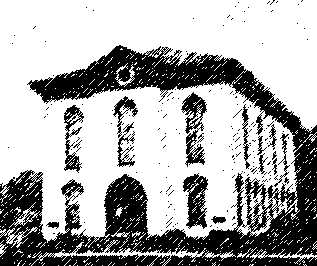Adapted from a story in the Mitchell County Press-News online,
originally written by Deb Nicklay
"I see life from the working side of the fence, and not from the
buggy of the visiting city novelist...The beauty of the scene is
there truly enough, but beneath it all are pain and squalor. I aim
to put all there is in the scene..."
--Hamlin Garland, 1894
Many Hamlin Garland researchers are beginning to give Garland's time in Mitchell County its due. Many, including local Garland researcher
 |
Garland is credited with being among the first authors to vividly portray and capture the often tortuous life of the farmer on the "Middle Border," a euphemism for the Midwest, in the late 1800s. He won the Pulitzer Prize for literature for his "A Daughter of the Middle Border," in 1921.
Garland was born in West Salem, Wisconsin, in 1860. His family moved to
 |
Ironically, Garland rarely returned to Osage after he left. Although his boyhood influenced his best writing, it was also a place where his mother and father aged and labored with little return.
"It is all painful, too depressing. My old-time world, the world that appealed to my imagination, is gone," he wrote in his diary of a trip to Osage in 1903. He despaired how his old neighbors looked beaten down.
"The 'girls' were old and gray, some of the 'boys' old and shiftless. It was a magic world once; it is a dismal region now," he wrote. Garland went on to live most of his life in big cities like: Boston, New York and Los Angeles.
When Kurt Meyer was told he could take a book from his Otranto Township country school's library before it closed many years ago, his choice was "Boy Life on the Prairie," by Hamlin Garland. He was thereafter
 |
Few people today remember the Pulitzer Prize winning author, who died in 1940. But Meyer, who is now 49, is part of a growing number who are revitalizing interest in Garland -- who spent his teenage years in Mitchell county; from 1870 to 1881.
Kurt Meyer has produced a presentation entitled "The Power of Place: A Photographic Essay of Hamlin Garland's Mitchell County, Iowa." It was presented to a full house at the St. Ansgar High School.
Meyer, a Mitchell County native who lives in Edina, Minn., made a similar presentation to the American Literature Association's annual conference in 2003, also the meeting site of the Hamlin Garland Society. The presentation's exhibit-size photographs chronicle Garland's Mitchell County as he knew it. Garland is credited with being the first to write of the toils of Plains settlers and farm life in the 1870s and 1880s. The photographs, taken by photographer Jon Morris, depict scenes of the Garland homestead, and other rural landscapes of Burr Oak Township.
Edited by Kermit Kittleson